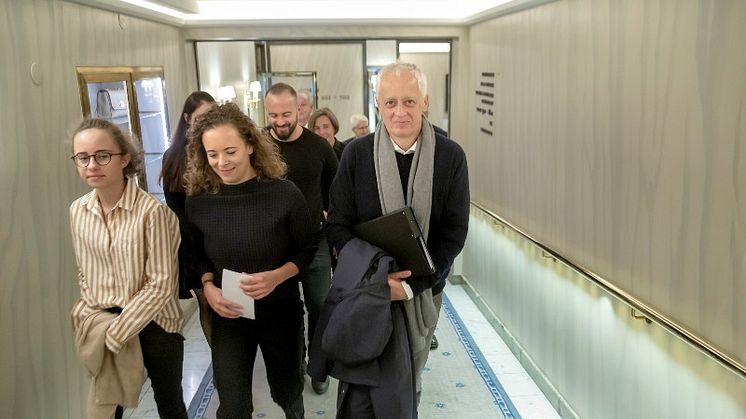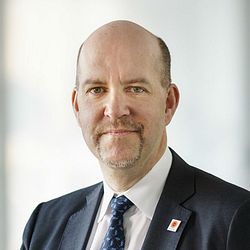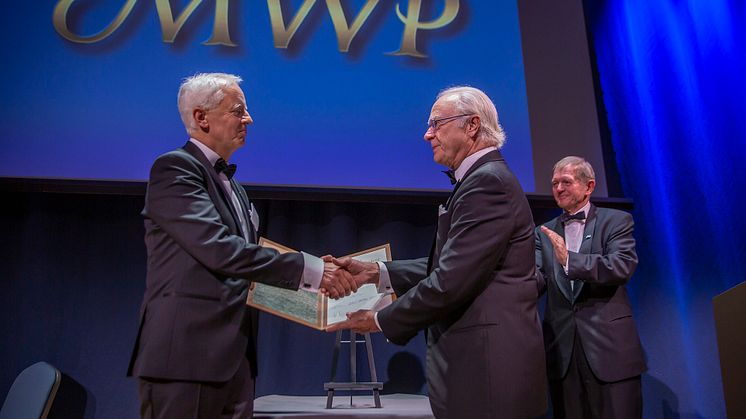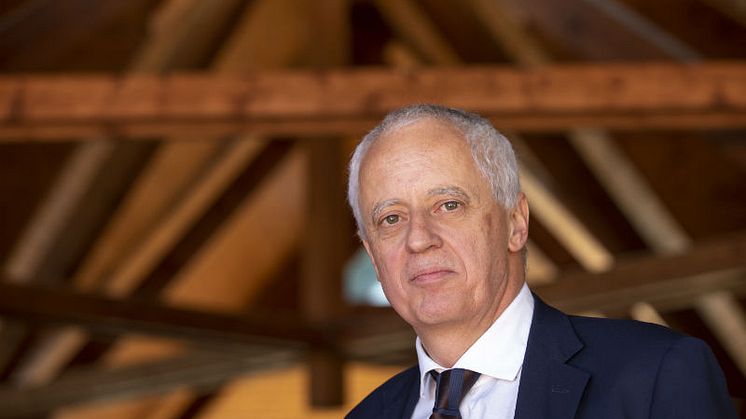
News -
The Prize a turning point
Receiving the 2019 Marcus Wallenberg Prize made Gerhard Schickhofer reflect on his career.
– It is a situation to think about my work and future, he says.
Last October Gerhard Schickhofer received the 2019 Marcus Wallenberg Prize from King Carl XVI Gustaf. The ceremony and following banquet took place at Grand Hôtel, Stockholm, Sweden, with 350 guests from forest industry and forest research worldwide.
Gerhard Schickhofer was awarded for the scientific and technological development of cross laminated timber, CLT, that can be used in multi-storey buildings. CLT consists of several layers of solid wood laminations glued together crosswise. The elements are very strong and stable.
The Laureate is a professor at the Institute of Timber Engineering and Wood Technology at Graz University of Technology, Austria. He thinks that science first and foremost has a mission to gain new knowledge – regardless of whether it will be economically utilized or not.
– I count myself lucky to have had the possibility of responding with my scientific work to the urgent issues of the timber industry. I have achieved all that a scientist might hope in obtaining economic relevance and social appreciation, he says.
In times of climate change he is both happy and proud to work with green technology.
– CLT offers a construction method that stores carbon dioxide. Let us benefit from our forests and the wood available in them!
Combined timber with shell structures
Gerhard Schickhofer was born in Vorau, in upper Steiermark in Austria, which is one of the most forested countries in Europe. He graduated as a civil engineer, specialized in structural engineering at Graz University of Technology.
– As a student I was really fascinated by shell structures in concrete, steel or wood. The three-dimensional structure was a challenge, Gerhard Schickhofer says.
His master’s thesis focused on steel structures. The first one to offer him a position as a PhD was however the professor of timber engineering.
– He was a good supervisor. He supported my idea to combine timber with shell structures, which were two different research fields at that time.
Gerhard Schickhofer tried to make the industry interested in his research, but soon realized there was a huge communication problem.
– Academy and industry have different languages, and we did not understand each other in the beginning. It was really hard, he recalls.
Things went smoother after his dissertation in 1996, and Gerhard Schickhofer came to play an important role in establishing European standards and Technical approvals for CLT production and use in industrial applications of wood construction.
His office was the first building in CLT at an university campus in Austria when it was constructed in 2000.
– One advantage with CLT is that you can hide the electric cables inside the blocks. And the assembling process is very important. Instead of building the house brick by brick the whole house can be prefabricated in a factory and constructed very fast at the building site.
During the Marcus Wallenberg Prize event Gerhard Schickhofer was invited to a seminar with young researchers participating in an extended program in connection to the celebrations. He told them about the resistance he met initially, not only in the industry but also the academy.
– No one was interested in the beginning.
He remembers an international conference on light-weight structures, where he was the last speaker – and the only one talking about massive timber.
– I saw the faces of the audience. They did not believe me. It took me a long time to win global acceptance.
One of the post doctors wanted to know how to understand the market.
– Please consider the consumer. And engineers and architects – architects are closest to the consumer, Gerhard Schickhofer answered.
He told his young colleagues about the importance of dedication.
– As a researcher you must go your own way – and don’t leave it! Keep the way of what you are doing!
Career and life choices
The Marcus Wallenberg Prize Award has meant a time of temporary conclusion to Gerhard Schickhofer. A time to sum up and evaluate both career and life choices.
– On the one hand I see my future tasks more and more in the support of young researchers. On the other hand I search for new challenges. I’m open to other possibilities, open to do other things. Maybe other sectors using timber? Architecture, furniture design?
His wife Ursula thinks he has always spent too much time at the office. She is a teacher at primary school and has been working part time to be able to look after the four children –most of them now grown up. Lucas, 30, did his PhD in Stockholm, Sweden. Nanna, 28, is a teacher in Graz. Paul, 23 studies mathematics, sociology, architecture and everything else that he finds interesting. Fanny, 13 is still at school.
Gerhard Schickhofer has never had any hobby – and never missed it – but has lately taken an interest in old furniture, just like his father-in-law once did.
– He used to buy old timber furniture and restore. He did nice things. Maybe it is next step to me. I would like to work with veneer to get light structures, different shapes. It could be a restart. But I also realize I have to spend more time with my family, he says.


